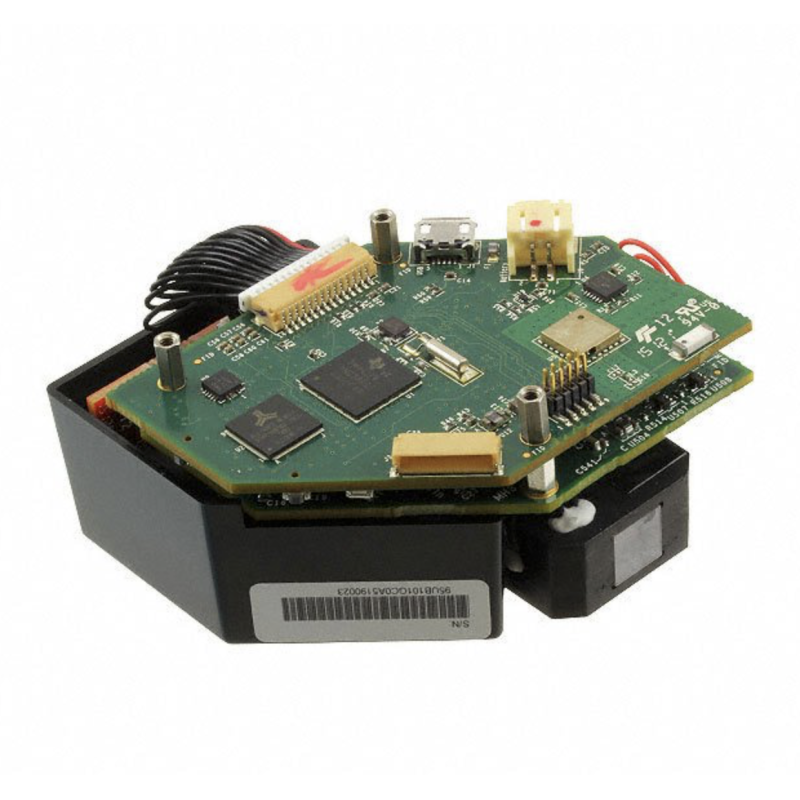






RLX COMPONENTS s.r.o. , Electronic Components Distributor.
RLX COMPONENTS s.r.o. , Electronic Components Distributor.
DLPNIRNANOEVM DLP NIRscan Nano EVM is a complete NIR Spectrometer 900-1700nm
DLPNIRNANOEVM DLP NIRscan Nano EVM is a complete NIR Spectrometer 900-1700nm
The DLP® NIRscanTM Nano EVM is a third-party implementation of the next generation DLP reference design to enable faster development cycles for mobile spectrometer applications.
This guide is an introductory document for the DLP NIRscan Nano EVM that provides an overview of the system and the system software.
Spectroscopy is a powerful technique for recognizing and characterizing physical materials through the variations in absorption or emission of different wavelengths of light by a sample. Spectrometers measure the variation of light absorption of materials. The DLP® NIRscan NanoTM EVM is a complete evaluation module to design a high performance, affordable near-infrared portable spectrometer. This flexible tool contains everything a designer needs to start developing a DLP-based spectrometer right out of the box. DLP technology enables handheld spectral analyzers for use in the food, pharmaceutical, oil and gas, medical, security, and other emerging industries to deliver lab performance levels in the field. The EVM contains the DLP2010NIR digital micromirror device, DLPC150 digital controller, and DLPA2005 integrated power management components. This technology brings together a set of components providing an efficient and compelling spectroscopy system solution for:
Portable process analyzers
Ultra-mobile spectrometer
The new DLP2010NIR DMD is optimized for operation at wavelengths between 700 and 2500 nm. The DLP NIRscan Nano EVM is one possible implementation of this new DLP technology, operating from 900 to 1700 nm.
DLP based spectrometers replace the traditional linear array detector with a DMD for wavelength selection and a single point detector as shown in Figure 1-1. By sequentially scanning through the columns (turning on specific columns of pixels) of the DMD, a particular wavelength of light is directed to the detector and captured. Refer to DLP Spectrometer Design Consideration for details.
DLP technology in Near-Infrared (NIR) spectroscopy provides the following advantages:
Higher performance through the use of a larger single point 1-mm detector in comparison to a linear array with very small pixels.
Lower cost system through the use of single element detectors and low cost optics. The high resolution DMD allows custom patterns to compensate for the optical distortion of each individual system.
Greater signal captured not only because of the larger entendue of the DMD compared to traditional technologies, but also through the use of fast, flexible, and programmable patterns and spectral filters.
With programmable patterns, a DLP spectrometer can (1):
– Vary the intensity of light to the detector by controlling the number of pixels in a column.
– Vary the resolution of the system by controlling the width of the columns.
– Use a set of Hadamard patterns that capture multiple wavelengths of light per pattern. Individual wavelengths are then retrieved through a decoding procedure. Each pattern turns on 50% of the DMD pixel at a time, directing much greater signal into the detector than the column scan shown inFigure 1-1.
– Use custom spectral filters to select specific wavelengths of interest.
Near-infrared optomechanical spectrometer engine optimized for 900 to 1700 nm wavelength range:
– Reflective illumination module with two integrated infrared lamps
– 1.8-mm × 0.025-mm input slit
– Collimating lenses
– 885-nm long wavepass filter
– Reflective diffraction grating
– Focusing lenses
– DLP2010NIR DMD (0.2-inch WVGA, 854 × 480 orthogonal pixel, NIR optimized)
– Collection optics
– 1-mm single-pixel InGaAs non-cooled detector
Electronics subsystem with the electronics consisting of four boards:
– Microcontroller board
Tiva TM4C1297 microprocessor for system control operating at 120 MHz
32MB SDRAM for pattern storage
Power management with Lithium-polymer or Lithium-ion battery charging circuits using bq24250
CC2564MODN Bluetooth Low Energy module for Bluetooth 4.0 connectivity
USB micro connector for USB connectivity
microSD card slot for external data storage
HDC1000 humidity and temperature sensor
– DLP controller board
DLPC150 DLP controller
DLPA2005 integrated power management circuit for DMD and DLP controller supplies
Špecifické referencie